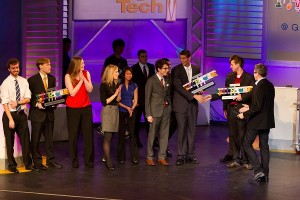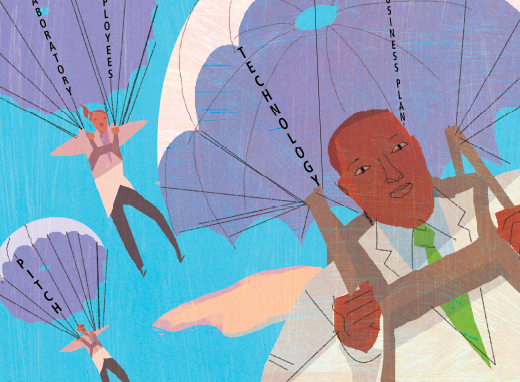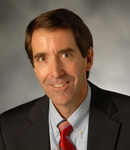Congratulations to the winners of the InVenture innovation competition at Georgia Tech. The competition aired Wednesday night on Georgia Public Broadcasting. The winners get cash prizes, a free patent filing and commercialization service through Georgia Tech’s Office of Technology Transfer.

Several of the teams have Emory connections, through the Wallace H. Coulter Department of Biomedical Engineering at Georgia Tech and Emory, and the Atlanta Clinical & Translational Science Institute.
Emergency medical professionals know that intubation can be rough. The second place ($10,000)Â MAID team created a “magnetic assisted intubation device” that helps them place a breathing tube into the trachea in a smoother way. The MAID was designed by Alex Cooper, Shawna Hagen, William Thompson and Elizabeth Flanagan, all biomedical engineering majors. Their clinical advisor was Brian Morse, MD, previously a trauma fellow and now an Emory School of Medicine surgical critical care resident at Grady Memorial Hospital.
“When I first saw the device that the students had developed, I was blown away,” Morse told the Technique newspaper. “It’s probably going to change the way we look at intubation in the next five to 10 years.”
The AutoRhexis team, which won the People’s Choice award ($5,000), invented a device to perform the most difficult step during cataract removal surgery. It was designed by a team of biomedical and mechanical engineering majors: Chris Giardina, Rebeca Bowden, Jorge Baro, Kanitha Kim, Khaled Kashlan and Shane Saunders. They were advised by Tim Johnson, MD, who was an Emory medical student and is now a resident at Columbus Regional Medical Center.
The finalist Proximer team, advised by Emory surgeon Albert Losken, MD, developed a way to detect plastics in the body, which can help breast cancer survivors undergoing reconstruction.
Posted on
March 11, 2011 by
Quinn Eastman
in Uncategorized








